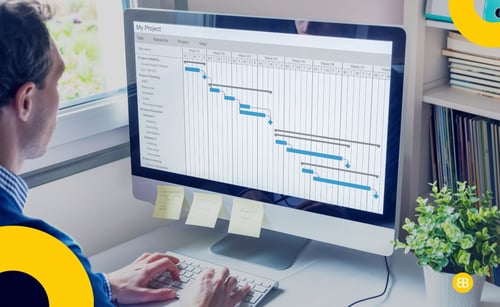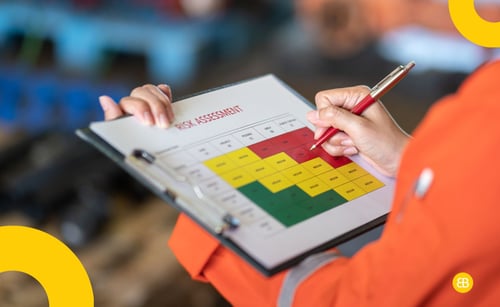Table of Contents
Introduction: What’s the Difference Between Prototype, MVP, and Full Build?
You have a business idea that could transform industries, but now the hard part begins: How do you bring it to life? Do you start with a prototype to gather valuable feedback and test your core concept? Do you develop a Minimum Viable Product (MVP) to test core features and attract early adopters? Or do you go straight into developing the final product, hoping that your business model will resonate with your target users?
The choices are overwhelming — and every decision feels like it could either make or break your idea. As a startup founder or corporate innovator, you know time and resources are precious, and getting this wrong could delay your product’s success.
In this article, we’ll break down the differences between prototypes, MVPs, and full builds. We’ll explain when and why you should choose each stage to align with your business goals and resources. Whether you're trying to validate ideas, find product-market fit, or scale up to meet demand, we’ve got you covered. Let’s navigate this journey together.
.jpg?length=500&name=Types%20of%20Prototypes%20(And%20When%20to%20Use%20Each%20One).jpg)
What Are the Differences Between Prototype, MVP, and Full Build?
Let’s break down what each stage really means for you — so you can save time, minimise risk, and make smarter decisions.
-
Prototype: A prototype is your first draft of an idea, an interactive model designed to showcase the core concept and user flows. It’s non-functional and typically incomplete, but it serves as a tool to help you visualise your idea and test assumptions. This stage helps you gather feedback early from potential users and investors — without having to commit significant resources. Think of it as a rough sketch to test the waters.
-
Minimum Viable Product (MVP): Now you’re ready for the first real product. The MVP is a functional version of your product that includes just enough features to solve a core problem for early users. It’s a way to get your product out there, gather real user feedback, and validate whether your idea is hitting the mark. This stage helps you ensure you’re not wasting time on features people don’t need, and gives you the data to iterate quickly.
-
Full Build: Once you’ve validated your MVP, you’re ready to create the final product. A full build is a fully functional version of your product, ready for scalability and market adoption. All your features are polished, the product is tested, and it’s ready to launch to the wider market. At this stage, you’ve already confirmed market demand and your business concept has been validated through the MVP stage.
When and Why Should You Build a Prototype, MVP, or Full Build?
The choice between prototype, MVP, and full build depends on where you are in your development journey. Let’s help you decide which stage is best for your business goals:
| Stage | Best For | Business Objective | Who Uses It |
|---|---|---|---|
| Prototype | Early idea testing, investor pitches | Validate the desirability of your idea | Founders, designers, teams |
| MVP | Fast market launch, testing product-market fit | Get core product feedback and initial users | Startups, growth teams |
| Full Build | Scaling to market, monetising | Deliver a complete, market-ready product | Enterprises, scale-ups |
Prototype: If you have a basic idea and need to test its desirability with early users, start with a prototype. This is a cost-effective way to gather feedback and ensure that investors and potential users see value in your concept. The prototype helps you visualise your core features without spending too much time or money.
MVP: If you’ve validated the core concept and now need to test whether it actually solves a problem for real users, it’s time for an MVP. This stage allows you to release just enough features to solve the problem for early adopters and get real feedback on the core functionality. The goal is to validate your product-market fit while minimizing unnecessary investment.
Full Build: After gathering enough feedback and data from the prototype and MVP stages, you can confidently move to the full build. At this stage, your product is ready for scaling, with all the features polished and market-ready. This stage allows you to invest heavily in user acquisition, growth, and expansion.
Cost, Time, and Risk: Investment Considerations for Prototype, MVP, and Full Build
Let’s be honest: you don’t have endless resources. Smart founders know the importance of making strategic investments that deliver value. Here's how each stage affects your investment:
-
Prototypes: Low-cost and quick to develop, prototypes help you visualise your idea and test whether it resonates with potential users and investors. Prototypes are an affordable option for early-stage validation, helping you minimise risk before committing to expensive development work.
-
MVPs: Developing an MVP requires more resources and time because you’re building a working version of your product with the essential features. It’s a bigger investment than the prototype, but still cost-effective in comparison to the full build. An MVP lets you gather user feedback from real users, ensuring you’re not wasting time on features that don’t align with market demand.
-
Full Builds: The full product requires the most resources because you’re building all the features and scaling the product for the market. By this stage, you’ve already validated your business concept and core functionality, so you’re ready to launch your final product to the world. Investment in the full build is necessary when you’re confident in your product’s value and the market demand.
How Investors See Prototypes, MVPs, and Full Builds
Investors see the stages of development differently because they’re looking for proof that your product is ready for market adoption. Here’s how each stage influences their perception:

-
Prototypes show vision. Investors are intrigued by your idea and your business concept, but they want to see whether the core problem you’re solving resonates with users. Prototypes give them a glimpse of your idea’s potential, but they aren’t enough to secure serious investment.
-
MVPs show traction. Investors want to see real-world validation. They’re interested in whether your product works in practice, and MVPs help prove that. When you have an MVP, you’re showing that you’ve already tested the market, collected feedback, and now have early adopters. This is where investors begin to take you seriously.
-
Full Builds show scalability. Once your MVP has validated the product’s core features, investors want to see that your product is ready to scale. They’ll be looking at your full build to assess market readiness and growth potential. A fully developed product demonstrates that you’re ready to capture a significant portion of the market and expand rapidly.
Examples of Successful Startups That Built a Prototype, MVP, or Full Build First
Real-world examples help show how successful startups navigated their product development journey:
-
Dropbox: Dropbox started with a prototype video that showcased the core functionality of their product. This proof of concept video helped them gather early feedback and attract investors. They used this initial feedback to validate the concept before committing to full-scale development.
-
Airbnb: The founders of Airbnb created an MVP by renting out air mattresses in their own apartment. They used this simple MVP to test market demand for short-term rentals. Based on user feedback, they refined their platform and scaled it into the global service we know today.
-
Uber: Uber’s founders launched an MVP that allowed early adopters to book rides in San Francisco. They used feedback from these early users to iterate and refine their service before expanding into other cities. The MVP allowed them to test the core value proposition with real users before scaling.

Decision Framework: Which One Should You Build Now?
To make the best decision for your business, ask yourself:
1. What Problem Are You Solving for Your Audience?
If you don’t fully understand the problem your product solves, start with a prototype. It helps you visualise the user experience and test assumptions without investing too many resources. Use this stage to ensure that the problem your product solves resonates with early adopters.
2. Do You Need Real User Feedback?
If your idea is solid but you need real-world feedback, the next step is an MVP. The MVP lets you test your assumptions, gather user feedback, and refine your product based on real user needs.
3. Is Your Product Ready for Market Launch?
Once your MVP has validated your idea, and you have early adopters, it’s time for the full build. You’re ready to scale, add all features, and refine your product for the market. This is the stage where you’ll focus on growth, marketing, and user acquisition.

What Happens If You Get This Wrong
Skipping the prototype or MVP stage and jumping straight to a full build can lead to costly mistakes. Here’s what might happen:
-
Wasted Investment: Without validation, you risk spending money on features that users don’t want.
-
Delayed Time to Market: Skipping early feedback will delay your launch and increase the risk of building the wrong product.
-
Investor Pushback: Investors will want to see proof that your product has real-world demand. Without feedback from real users, securing funding becomes difficult.
What Founders and Product Leaders Are Asking
What’s the difference between prototype and MVP?
Can I skip MVP and go straight to a full build?
How long does it take to build a prototype vs MVP?
The Smartest Founders Don’t Build It All at Once
Building a successful product isn’t about rushing to the finish line. It’s about understanding your customers, validating your ideas, and scaling strategically. Whether you start with a prototype, an MVP, or a full build depends on where you are in your journey. Smart founders build in stages, validate constantly, and scale with confidence.
Ready to make the smartest decision for your product? Book a free Roadmap Session today, and let’s map out your path to success.

Akash, COO at EB Pearls, blends technical expertise with business acumen, driving the creation of successful products for clients.
Read more Articles by this Author